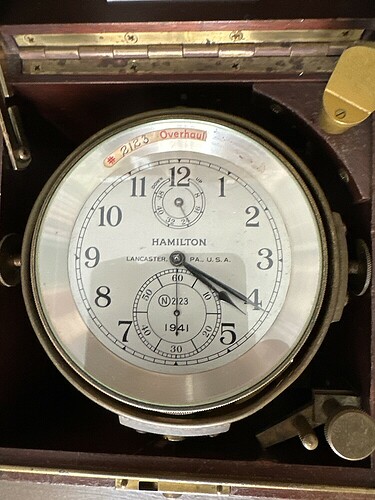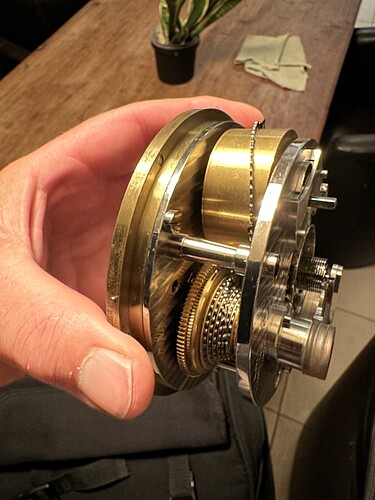Onlangs is deze Hamilton uit 1941 tot mijn collectie gaan behoren. T is een mechanische chronometer, met ketting aandrijving. Een gelijkaardig stuk kan men vinden in het Smithsonian instituut.
Aangezien ik altijd geleerd heb dat een goede technicus lui is, (lees :het moet in een keer werken zodat je er niet nog meer tijd moet aan besteden.) Heb ik de beschrijving van het Smithsonian overgenomen.
maar eerst foto’s
This instrument is a specialized timekeeper for determining longitude at sea. It is serial no. 1 from a run of approximately 10,000 similar timekeepers made by Hamilton Watch Co, Lancaster, PA in 1942.
World War II created a dire chronometer shortage for the United States. Before the war, most chronometers for American military and civilian customers were imported. Only a few American firms—including William Bond & Son of Boston and the New York establishments of John Bliss Inc. and T.S. and J. D. Negus—finished chronometers from parts imported from European makers. Chronometer making was a craft, with only a few hundred produced in any given year. When the war started in 1941, European suppliers of parts and finished instruments halted exports to the United States.
Anticipating the arrival of war, the U.S. Naval Observatory had asked American domestic watch manufacturers in 1939 for their participation in mass-producing chronometers. Domestic watch manufacturers Hamilton and Elgin agreed to undertake the design and production, but only Hamilton’s product met Navy accuracy requirements. Hamilton delivered two prototypes to the Navy on 27 February 1942, which passed with an error rate of 1.55 seconds per day. The firm went on during the war to mass-produce 8900 more chronometers for the Navy, 1500 for merchant shipping and 500 for the Army. Between 1942 and 1944, the price dropped from $625 to $390 per timekeeper.
Hamilton’s design for its Model 21 chronometer did not copy traditional European standards. Instead the design introduced key changes to improve accuracy. The modifications included changes to the escapement and the chronometer’s oscillating unit—the balance and hairspring assembly.
To find longitude at sea, a chronometer would be set to the time of a place of known longitude, like Greenwich, England, the prime meridian. That time, carried to a remote location, could be compared to local time. Because one hour of difference in time equals 15 degrees difference in longitude, the difference in time between the chronometer and local time would yield local longitude.
References:
-
Dick, Steven J. Sky and Ocean Joined: The U. S. Naval Observatory 1830-2000. Cambridge: Cambridge University Press, 2003.
-
Whitney, Marvin. The Ship’s Chronometer. Cincinnati: American Watchmakers Institute Press, 1985.
LOCATION
Currently not on view
OBJECT NAME
chronometer
box chronometer
DATE MADE
1941
1956
MAKER
Hamilton
PLACE MADE
United States: Pennsylvania, Lancaster
PHYSICAL DESCRIPTION
brass (overall material)
steel (overall material)
glass (overall material)
wood (overall material)
MEASUREMENTS
overall - chronometer case: 7 1/2 in x 8 in x 7 3/4 in; 19.05 cm x 20.32 cm x 19.685 cm
overall - carrying case: 9 1/2 in x 12 in x 10 in; 24.13 cm x 30.48 cm x 25.4 cm
overall - from catalog card: 7 1/2 in x 7 1/2 in x 7 1/2 in; 19.05 cm x 19.05 cm x 19.05 cm
ID NUMBER
ME.314825
CATALOG NUMBER
314825
ACCESSION NUMBER
210893
CREDIT LINE
Department of the Navy. Bureau of Ships
SEE MORE ITEMS IN
DATA SOURCE
National Museum of American History
Our collection database is a work in progress. We may update this record based on further research and review. Learn more about our approach to sharing our collection online.
If you would like to know how you can use content on this page, see the Smithsonian’s Terms of Use. If you need to request an image for publication or other use, please visit Rights and Reproduction
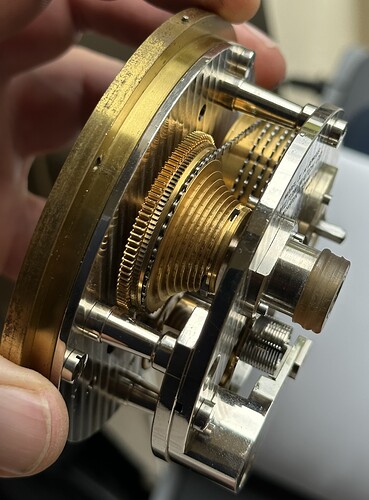
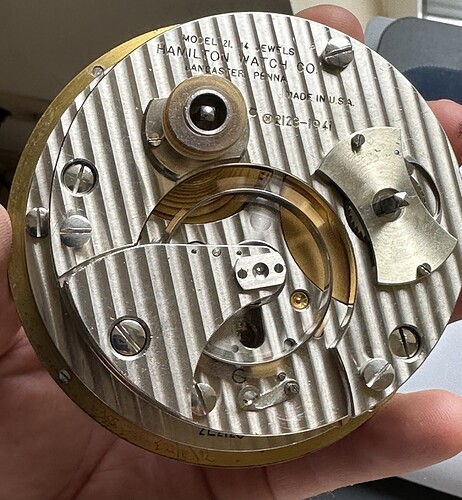
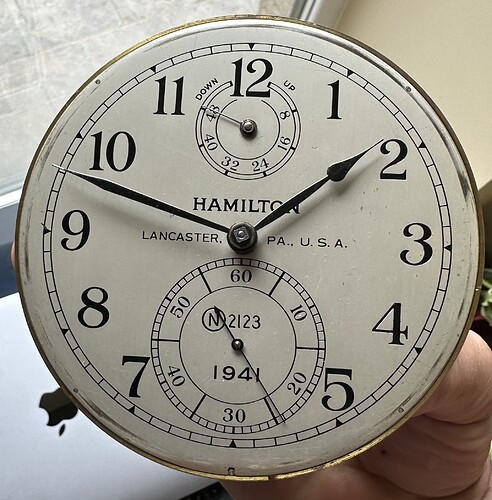


 Gaaf ding
Gaaf ding  heb je ook de kast waar in het uurwerk “hoort” ?
heb je ook de kast waar in het uurwerk “hoort” ?
